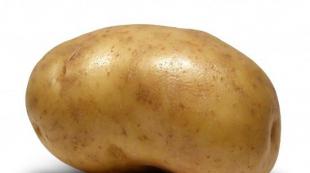Cutting nozzle for a drill from a grinder disk. High-quality home-made grinder Making a cutting nozzle
I make discs from ordinary cutting 200 mm electrocorundum.
The processing disc itself was broken by pliers from a large one, 200 mm. 15 V power is supplied to the electric motor through a diode bridge.

The motor is removed from the screwdriver for a voltage of 9 volts. Unfortunately, I don’t know the brand or power of it, I have to judge only by consumption. Here is the engine itself in the photo:

Bulgarian dreth anything, textolite is not a hindrance to her, even hard alloy VK8 filed a little (nozzle from a turning tool), glass also cuts - slowly (but surely).

The power supply of a homemade grinder is 15 V. The current, depending on the load, varies from 2 to 13 amperes. You can also put a diamond wheel on it, it will last for a long time and the purity of processing is noticeably higher.

Or equip the device with a thin disc cutter, turning it into a kind of circular saw. Ready-made sets of such cutters can be bought in online stores.

Videos of the work of a homemade angle grinder
In the video, the "yellow donut" transformer is taken from the Raduga-2 film projector, it has a 20v winding with a tap from 15v, it was intended to power the main lamp with a power of about 300 watts and has a rather large current. Rectifier diodes D242 during long-term operation without radiators get quite hot, so it is worth providing them with a heat sink, and for a particularly heavy load - with forced cooling. It would be even better if the power supply is equipped with the ability to adjust the voltage, in which case you can smoothly change the speed of the disk.
A grinder from a drill is easier than vice versa. The grinder or angle grinder (angle grinder) has become an indispensable electric due to the wide range of work that can be done with it, but it has its drawbacks that interfere with work.
With its help, it is not always possible to get close to hard-to-reach places and often it has high unregulated speed, by the way, because of this, increased security measures are required.
But, despite all this, under certain conditions, it is irreplaceable.
We can take advantage of all the advantages of angle grinders, yes, we can still get around its shortcomings.
To do this, it will be enough for us to get hold of a drive shaft with flanges from a grinder (I took it from an old, damaged one).
Bulgarian from a drill in photo explanations

1 drive shaft
2 Inner flange
3 Outer flange
4 Wrench for outer flange
5 Cutting disc for metal
We collect in the following sequence


We put the inner flange on the shaft so that it sits in the grooves, then we twist the outer flange.


Only the outer flange is tightened with a special key for this, the shaft is held open-ended on the reverse side of the inner flange.
For work, install a cutting (or other) disc



After installation, we tighten and install the drill in the chuck, we also tighten the shaft well in the chuck.

Ready!
Since the drill has a reverse, the working rotation must go clockwise, as when drilling.
Arrows (pictured) the obligatory direction of movement of the disk is indicated in this case, the outer flange with an internal (ordinary right) thread will tighten itself and will not unscrew during operation.
Attention!

Warning!
The basic rule of working with power tools is safety, which is not limited to glasses alone.
You ask: “Where can I get a shaft from a grinder if there is no old, faulty one?”
- In a power tool repair shop
- Order turner
- Assemble your version from improvised materials
- Perhaps there is a rem. kits (not interested)
I will share that this season I worked with this device and got a lot of pleasure from the maneuverability and the ability, if necessary, to adjust the speed of rotation of the disk. I think that in case you will evaluate everything yourself.
Bulgarian from a drill | Video explanation
Good luck with your repair!
——————————————
I must say right away that the idea of \u200b\u200busing a drill instead of a grinder is not mine, it’s just that for the first time I saw it at the master “bodybuilder” Alexander Borchaninov.
The need for a miniature tool exists where a person is engaged in the manufacture of souvenirs, models of ships and aircraft, small technical nodes and details.
Miniaturization goes in two ways. The first option involves the manufacture of only miniature tools - disks, cutters, etc. The second option provides for the manufacture of a grinding tool based on miniature electric motors.
First option - Using a drill + (Video)
 The first option has a simpler solution. Let's say you need to make a miniature grinding wheel that will be installed in a drill or screwdriver. To do this, we can take a broken disk. On it, using a caliper, we draw a circle of the required size. Then, along the drawn circle, we cut out the future miniature disk. In its center we drill a hole into which we insert a bolt with a diameter of 6 mm. We put on the washer from below and tighten the nut.
The first option has a simpler solution. Let's say you need to make a miniature grinding wheel that will be installed in a drill or screwdriver. To do this, we can take a broken disk. On it, using a caliper, we draw a circle of the required size. Then, along the drawn circle, we cut out the future miniature disk. In its center we drill a hole into which we insert a bolt with a diameter of 6 mm. We put on the washer from below and tighten the nut.
The bolt will be the axis of rotation of the disk. We insert it into the chuck of a drill or screwdriver and clamp it. With this tool, you can cut materials in hard-to-reach places or having small dimensions. You can grind finished parts.
It is easy to make a miniature cutter for cutting small parts from plastic or wood. To do this, take an ordinary tin cork from a glass bottle. In the center of it we make a hole for installing the axis. The same bolt with a diameter of 6 mm can serve as the axis. Align the edges of the cork and cut out the teeth. It is desirable to make a minimum markup.
Such a cutter, loaded into a drill or a screwdriver, can easily cut small wooden planks, for example, for modeling. Plastics also lend themselves to this simple tool.
The second option - Self-assembly + (2 videos)
If the task is to make a miniature tool with your own hands, then you must initially select an electric drive. As an electric drive, a motor from various devices- a printer, an old cassette recorder, or from an ordinary children's electrified toy.
Depending on the power of the electric motor, you can build a mini grinder in two directions. The first direction is the use of a mains power supply. For example, from an old mobile phone. The second direction provides for a fully autonomous model of a motor that will be powered by batteries or accumulators.
The difference between the two directions is in the hull design. In the first case, space is required only for the electric motor, and in the second, it will be necessary to install a battery compartment. 
It is very convenient to use a segment for the body pvc pipes. If its diameter is slightly larger than the diameter of the electric motor, then electrical tape can be wound on the motor. You can fix the engine with a glue gun.
As plugs, you can use corks that are put on PVC pipes during transportation and storage. In the front plug it is necessary to make a hole for the motor shaft, and in the back plug for the power wire. On the case it is necessary to fix the power connector and the switch.
The ideal option would be the ability to mount some kind of collet clamp on the shaft. This will allow you to use standard burs, drills and non-standard mini cutters and discs. If you cannot install the collet, you can connect the shaft and the cutting tool using a double contact from the electrical block. 
In a similar way, you can make a case for a mini self-powered grinder. Only after installing the engine in it, it is necessary to install the battery pack. The wires from the batteries will be connected through a switch mounted on the case.
In both cases, mini grinders can be used and homemade tool and standard industrial - burs and drills.
Often in everyday life it is necessary to repurpose tools, and most often it is the drill that has to be finalized, because. it is the most versatile tool available. But you must always choose the right tool to specifications coincide with the required, so that the result will be perfect.
Electric drill device: 1 - ventilation grill, 2 - power regulator, 3 - speed regulator, 4 - impact switch, 5 - quick-release chuck, 6 - self-centering jaws, 7 - chuck mounts, 8 - gearbox, 9 - fan impeller, 10 - electric motor, 11 - reverse lever, 12 - trigger, 13 - cord lock, 14 - cord terminals.
How to make a grinder out of a drill: the reprofiling process
Tools and materials:
- drill;
- bar;
- rasp;
- lubricant;
- nozzle from the grinder;
- ruler.
Before you make a grinder out of a drill, you need to make sure that this tool is not needed at this time for other work. After all, assembly and disassembly take some time. A grinder from a drill will not be as easy to use.
You can make a grinder out of a drill with your own hands in a simple way:

- A nozzle is selected for the grinder, which will be used for work. Any option is suitable, because. production for one-time work.
- A steel bar of small diameter is selected, from which it is necessary to grind off the edge so that it enters the nozzle. The places of contact between the petals of the cartridge and the bar are slightly ground off for a better hitch.
- Fixation.
Here everything is done in a matter of minutes, but immediately after dismantling, the structure will become inoperable, or even completely fall apart. Such a refinement is done in cases where you urgently need to make a grinder out of a drill, because. the main one is out of order.
A more complex version is not very different, but still has a lot more work to do:

The layout of the drill-"grinder": 1 - drive (electric drill), 2 - desktop (duralumin, sheet s5), 3 - Circular Saw, 4 - rack (St3, strip 20 × 5, 4 pcs.), 5 - support holder of the mandrel shaft, 6 - mandrel, 7 - electric drill holder, 8 - base plate (furniture chipboard).
- To begin with, the cartridge is removed. It will now be required only for reverse recovery, but for now it is advisable to simply clean and lubricate all its insides. Store only in a dark, dust-free place.
- A nozzle for a grinder made of durable steel is selected (often there are lightweight options that in no case should be installed here).
- On the this stage you will need a rod of such a length that it extends 1.7-1.9 cm beyond the drill. Its end is ground with a rasp so that it eventually fits perfectly with the nest in the nozzle. Before the joint, you need to use machine oil or any other lubricant.
- The ball bearing is installed in the place of the output, and a bar is threaded through it and fixed in the base. Sometimes this step is not required, so the bar can simply be locked in place.
This method is implemented in a matter of hours, and the dismantling and installation of the cartridge does in minutes. After the design has been assembled 1 time, it will no longer need to be changed or supplemented in the future. It is worth remembering that in this case protection is not installed, therefore, when working, people should not be on the sides. You will not be able to injure yourself due to the fact that the disk rotates parallel to the master.
Back to index
Support structure and minor improvements
Tools and materials:
- steel strip or bar;
- welding machine;
- clamps;
- pliers.

Almost always, such a grinder is made as a stationary tool, so the work surface must be prepared. Any wooden or metal countertop is suitable for it, and metal has an undeniable advantage.
The working platform is bent from a reinforcing ribless rod 12 mm or a steel strip (2-3 mm). Outwardly, it must completely repeat the contours of the model used, because. when immersed, maximum fixation should be ensured. Usually 4 transverse strips are used to form the contour and 3 perpendicular to them for rigidity. The joint is made using electric arc welding.
After such a bowl is installed on the table, it must be tightly screwed to the surface with bolts and nuts (bolts exclusively with flat caps). The fixation must be sufficiently rigid, therefore at least 4 mounting points.
At the very end, the instrument is turned over and lowered into place (handle up). The final fixation is made by clamps, with which everything is pulled together from 2 sides.
If you have to work with the tool for a long time, then make a protective cover. To do this, it is enough just to make a cut of sheet steel and bend its edges so that it occupies all the space above the working area. To fix it to the tool, you need to make a clamp from a steel strip (exactly the size of the drill) and fix it with your own hands.
There are many reasons why people resort to making tools with their own hands, and not always it will be the price. When is it made homemade grinder, the emphasis is not on its cost, but on the safety of the workflow, sometimes on the use of illiquid parts. You can make a tool from different devices.
Working with drilling tools
Tools and materials:
- drill (motor);
- nozzle for discs;
- adapter.
Some manufacturers began to make adapters that allow you to use a drill (screwdriver, hammer drill) as a grinder. Although as an adapter it is enough to use a standard nozzle from a grinder.

There are several options, and the least popular is simply to modify the existing tool. This approach is used in cases where something happened to the main tool and you need to urgently complete the work. After work, the nozzle is simply removed and the tool acquires its original properties.
The most popular option is when the drill fails, but the motor itself is still working, i.e. it can be used for any purpose you wish. Power supplies can be assembled by yourself, but it is better to buy for the desired voltage (most often there is a marking on the electric motor, otherwise you will have to remember the parameters of the drill). Those. only 3 elements are required - a power supply, an electric motor and a nozzle for disks, which are soldered together in series.
Power is distributed as follows:
- Perforator (up to 5000 rpm). Even very thick steel up to 5 mm can be cut with such a homemade product.
- Drill (up to 3000 rpm). Works of medium complexity, most often used for cutting thin-walled pipes and sheet steel.
- Screwdriver (up to 700 rpm). It is used for light work, but a special advantage is the ability to perform fine work, and it is no longer necessary to fix the tool on the tabletop.
Back to index
Work with petrol and electric saws
Tools and materials:
- saw;
- steel roller;
- belt;
- disc attachment.

Saws are used in cases where grinders break. Many craftsmen have such a tool in stock separately, because. it allows you to carry out work without the risk of tool breakage. And very important feature is economy, because where the disk breaks on an ordinary angle grinder, it simply jams here.
The changes are quite simple:
- The chain is replaced with a belt. It is advisable to use rubberized belts, because. the rest do not allow to achieve the same high quality.
- At the end of the boom, a roller is screwed so that the belt passes exactly over it. This roller should be small in size, but made of good steel.
- A nozzle for cutting discs is screwed to the roller.
Electric and chainsaws in this case will differ only in power. But in fact, it is better to use the electric option, because. although it has lower performance, it is more economical. The gasoline version has its own big plus - you can work even where the wires do not reach.
It is very important to remember that the belt should not be too tight, so as not to break. In addition, it does not need to be fixed on a passable path, so that when jammed, it can easily scroll. When the belt wears out, it will have to be replaced immediately, but the rest of the time the risk of injury will be minimal, and disc consumption will decrease.
Back to index
Working with asynchronous motors

Tools and materials:
- asynchronous motor;
- nozzle for discs;
- belt;
- adapter;
- steel rollers.
A lot of masters use this option. It is quite expensive, and even a similar amount of turnover will be impossible to achieve. A huge advantage of asynchronous motors is their power, tk. they will work even with the thickest-walled workpieces. There are 2 options for working with such engines: direct and indirect.
When choosing a direct option, you don’t have to invent and work out the design, because. just put the disc adapter on the motor output, attach it to the tabletop and you can start working. Despite the power indicators and the simplicity of the design, there is 1 minus - the high consumption of saw blades, because. in any case, an asynchronous motor is more powerful (albeit less revving) than a collector motor.
The mediated version is different large quantity elements, but if desired, it can be made portable. To make it, you will need to follow the following steps:
- Welded to the engine profile pipe, and in such a way that its plane is parallel to the rotational shaft.
- A steel roller is welded to the end of the pipe (it must rotate freely). Here you can fasten the nozzle for discs to the roller.
- Another 1 steel roller is put on the engine shaft, and its location must be strictly parallel to the previous one.
- A rubberized belt with medium tension is thrown over both rollers.
Any of the 2 tools will serve more than 1 year, because. of such a plan, engines are not prone to burnout.









